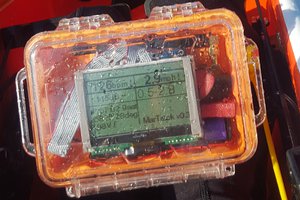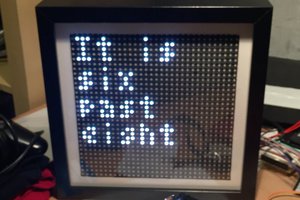I kickstarted a WiPy and expansion board last year so I could have a play with MicroPython. When it arrived I had a quick tool around with it, and found it surprisingly (to jaded me) worked exactly as advertised. I was very impressed.
Earlier this year I saw a tide clock on hackaday and it stuck around in my head as a neat thing, but living 70 miles from the sea was pretty irrelevant to me. Then when my stepmother's birthday approached I realised why it was in my head, as she swims in the sea daily, and would actually be a useful present. I would need Internet access to grab tide times, a battery and means to charge it, an interface to a display, and an RTC to sleep for long periods. The WiPy with its expansion board had all those features. Perfect!
The display couldn't be a set of 7-segment LEDs or an LCD as the target user says she is "not a digital native" so I looked at an E-Paper Display (EPD) as it's much easier on the eye and easier to blend in with other things.
The final product is a 10"×12" deep picture frame with the electronics stuffed within the frame, and a hole cut in the picture to show the display. It displays:
- Time and height of next low/high tide
- Time and height of the one after that
- Current land temperature
- Current sea temperature
- Current wave height at sea
- Wind speed
- Wind direction
- Phase of the moon
- Sunrise time
- Sunset time
- Current date
- Battery state

 PK
PK
 Thorsten von Eicken
Thorsten von Eicken

 Jorj Bauer
Jorj Bauer